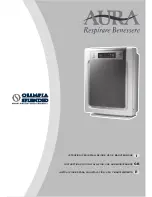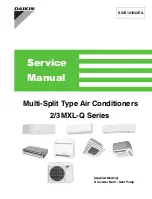
88
Air tightness test and vacuum drying
Vacuum drying pipes and indoor units
ॷ Ƹϑʪϩͱͱ̷ϑ˙ͱθŵࣛߦߣߢϩͱΧθʪЭʪ͝ϩϩ˵ʪ̈͝Ѥͱиͱ˙˙ͱθʪ̈˝͝ϑЇɵϑϩɇ͝ʀʪϑɇ͝ʒθʪϑ̈ϑϩɇ˝ɇ̈͝ϑϩϩ˵ʪ̈͝ϩʪθ͝ɇ̷ΧθʪϑϑЇθʪ
ॷ
Use vacuum pump that allows vacuuming under -100.7kPa (5 Torr).
ॷ Ƹϑʪϩ˵ʪЭɇʀЇЇ͔ΧЇ͔Χӥϩ˵ϩ˵ʪʀ˵ʪʀ̧Эɇ̷ЭʪϩͱΧθʪЭʪ͝ϩΧЇ͔Χͱ̷̈˙θͱ͔Ѥͱӥ͝˝ɵɇʀ̧иɇθʒи˵̷̈ʪϩ˵ʪЭɇʀЇЇ͔
pump is stopped.
ॷ
Completely close the liquid gas side service valve of the outdoor unit.
Charge additional refrigerant to the pipe
No
Yes
Perform vacuum drying again
Check for gas leakage
Vacuum destruction
࡛
Apply nitrogen gas to the pipe at
ΧθʪϑϑЇθʪͱ˙ߢߢߧऌđΧɇ
Yes
No
ĮЭʪθࣛߣߢߢߩऌ̧ťɇ࣑ߧऌƟͱθθ࣒
Pressure increase
Connect the manifold gauge to the liquid
side pipe and gas side pipe (when installing
outdoor units in module).
When installing outdoor units in module, connect the manifold
gauge to liquid side pipe and the gas side pipe.
Perform vacuum drying of the liquid side pipe
and gas side pipe (when installing outdoor
units in module) using a vacuum pump.
Make sure that check valve is installed to prevent pump oil from
Ѥͱӥ͝˝̈͝ϩͱϩ˵ʪΧ̈Χʪ
While the vacuum gauge pressure is less than
ࣛߣߢߢߩऌ̧ťɇ࣑ߧऌƟͱθθ࣒ࡥΧʪθ˙ͱθ͔ϩ˵ʪЭɇʀЇЇ͔ʒθц̈͝˝
for more than 1 hour and close the valve.
Vacuum pressure must be checked with the vacuum gauge.
After vacuum pump stops, check whether
ϩ˵ʪΧθʪϑϑЇθʪ̈ϑ͔ɇ̈͝ϩɇ̈͝ʪʒӥϩ˵̈ࣛ͝ߣߢߢߩऌ̧ťɇ
࣑ߧऌƟͱθθ࣒˙ͱθɇ͝˵ͱЇθ
࢜
If the pressure rises in an hour, either water is remaining inside the pipe or there is a leakage.
࢜
Ǯ˵ʪ͝ϩ˵ʪɇ͔ɵ̈ʪ͝ϩϩʪ͔ΧʪθɇϩЇθʪͱ˙ЭɇʀЇЇ͔̈͝˝Χ̈Χʪ̈ϑ̷ͱи̷࣑ʪϑϑϩ˵ɇ͝ߢঌA࣒ࡥ͔ͱ̈ϑϩЇθʪ͔̈˝˵ϩθʪ͔ɇ̈͝ӥϩ˵̈͝
the pipe. Therefore, pay special attention to the pipe sealing in the winter.
















































